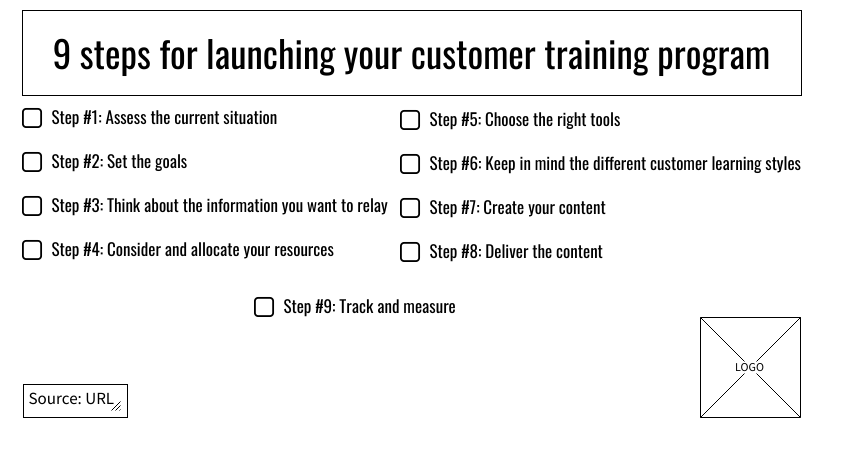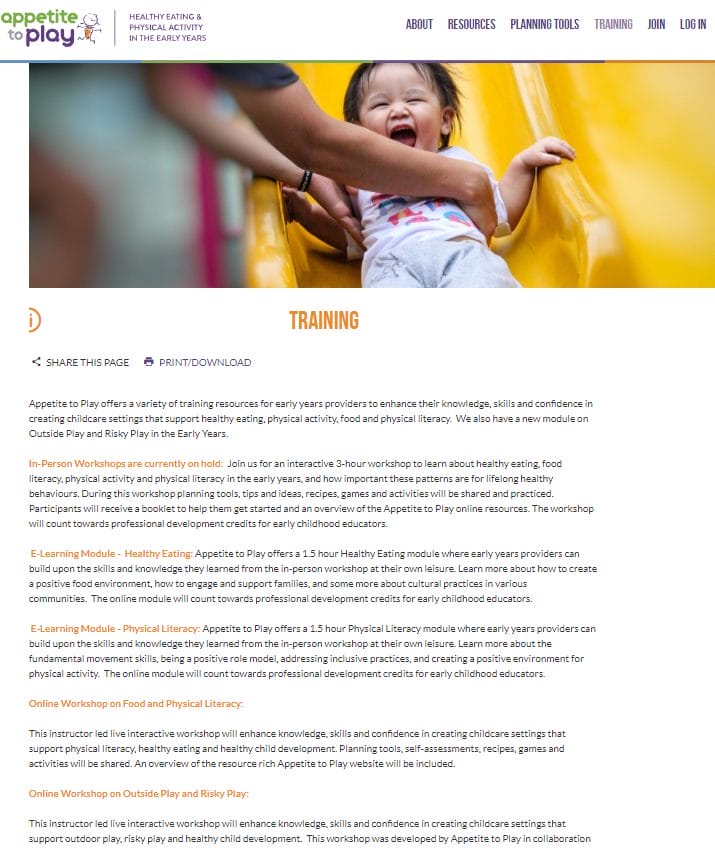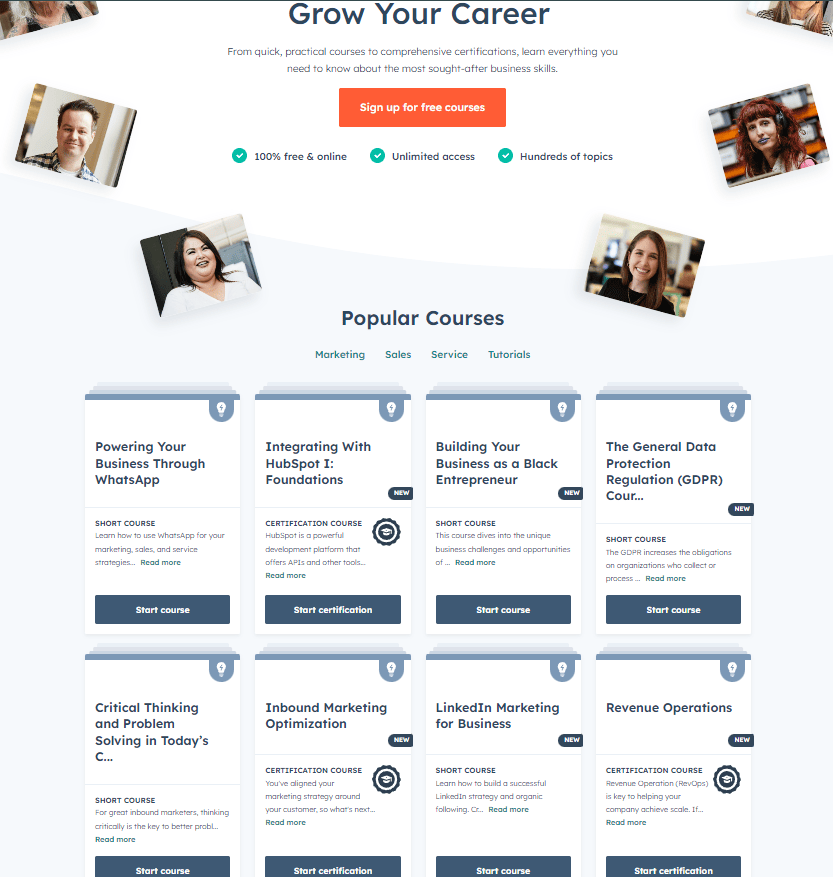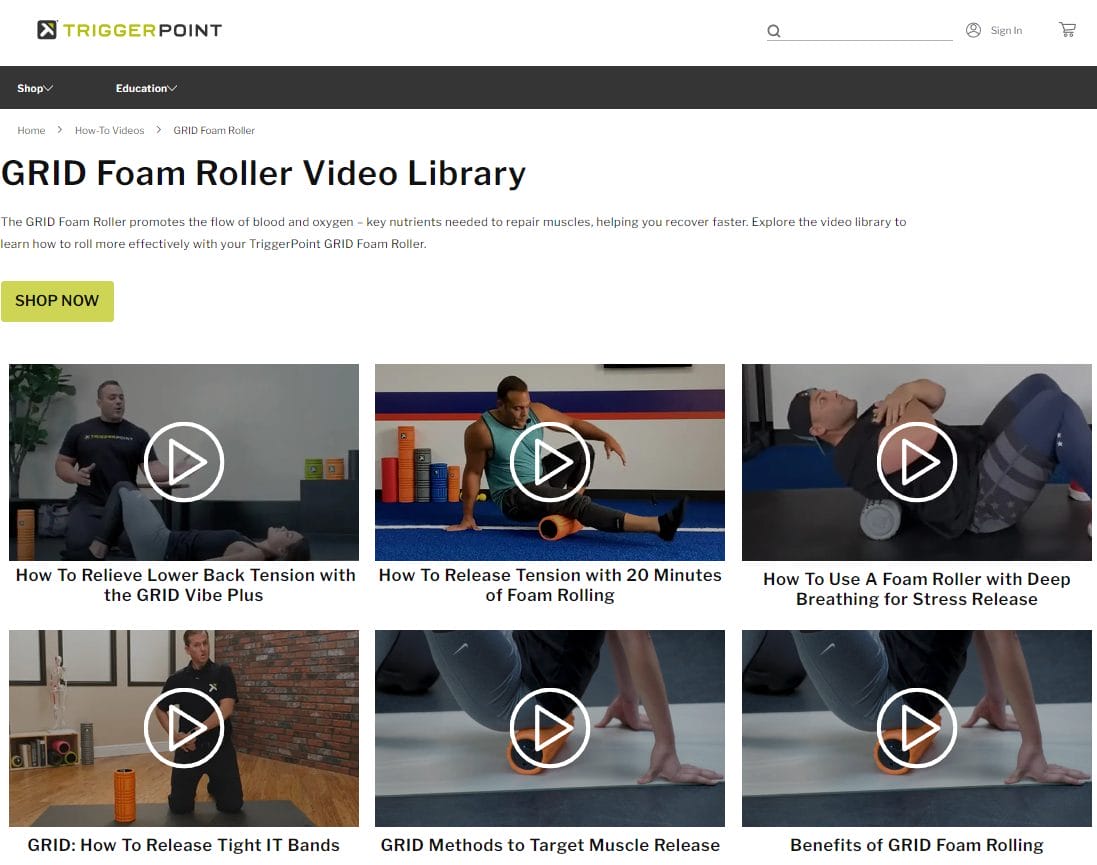A customer education program is a key part of any client onboarding process, before and after a sale is made.
It helps to inform potential customers about particular industry challenges and how the product or service can address those issues.
And once companies make the sale, the customer education program comes in to aid the client in learning how to best use the product and get the most value from it as soon as possible.
In this guide, we’ll be looking at best practices for launching a customer education strategy, several types of customer education content, who should own the program, and more.
Disclaimer: The information below is accurate as of April 23rd, 2024.
What is a customer education program?
Customer education is the process of training and informing clients about a product or service the company offers.
A large part of a successful customer education program revolves around training new customers how to use the product to get the most out of it in the shortest time possible.
But this is not all that it covers.
As part of a broader customer onboarding process, customer education becomes an invaluable tool for new clients throughout the customer journey.
Whether as a refresher course or for upselling purposes, customer training and education play a major role across the customer life cycle.
Similarly, customer education plays an important role during the presale phase as well.
It’s a way of informing potential customers about the industry and its challenges. It’s also a way of raising awareness about how the company’s product can help address their pain points.
So, what are the benefits of a customer education program?
Why is a customer education program important?
As customers become more knowledgeable about what products and services exist on the market, companies need to do their best to attract as much of the market share as possible.
They need to help their clients achieve early success with the product by providing them with the necessary know-how.
By helping customers achieve their goals and addressing their pain points, they’ll reward you with their ongoing loyalty and support.
According to the MIT Sloan School of Management, companies that offer training and education programs are trusted more by their customers.
This is a twofold benefit. First, trusted brands are far more likely to be seen as thought leaders in their respective business sectors.
Secondly, trust can often lead to customer loyalty, bringing a whole host of other positive business outcomes.
Loyal customers spend 67 percent more than new customers, are more likely to try new features, and can even become brand ambassadors.
Another study conducted by Forrester revealed that customer education positively impacts any type of business.
It can increase customer satisfaction by 11.6 percent, increase customer retention (and lower churn) by 7.4 percent, boost customer lifetime value by 7.1 percent, increase revenue by 6.2 percent, and reduce customer support costs by 6.1 percent.
The study also showed that 63 percent of high-success organizations surveyed worked with third-party vendors to help them with their customer education initiatives.
For more information on this topic, check out our list of key customer education benefits.
Let’s now look at who should take ownership of the customer education strategy.
Who should own the customer education program?
To scale operations, optimize the customer onboarding process, and fulfill all client education needs, organizations will have to work with both a customer success team and a customer education team.
At first glance, these two seem to be interchangeable and there’s definitely some overlap.
As companies start scaling their operations, they can have a single team do both jobs.
Initially, the customer success team will be in charge of new customer onboarding, providing them with the necessary training and product knowledge.
But as the customer base continues to grow, companies should consider creating a dedicated customer education team to spread out responsibilities.
This will free up customer success managers (CSM) and their teams to focus more in-depth on tracking and analyzing key customer success and onboarding metrics, brainstorming, and planning out the customer education strategy.
The aim is to standardize the learning experience across the entire customer base to boost customer engagement and product adoption.
This will obviously take into consideration learning content personalization based on customer segments.
The customer education team, on the other hand, will be focusing on designing and implementing the e-learning content.
It will typically comprise customer education leads, customer service reps, product developers, instructional designers, subject matter experts, and graphic designers.
It should also go without saying that there needs to be buy-in for the customer training program at executive level to get the project off the ground.
Similarly, the product development and customer support teams should be actively involved in the process as well.
So, to put it simply, the entire organization needs to take ownership of the program for it to be successful in the long term.
That being said, what are the key steps in launching a successful customer education program.
9 steps for launching your customer training program
Beginnings are always the hardest; particularly if you’re doing something that you’ve never done before.
This portion of the article will highlight nine steps to help you launch your customer training program in the right way.

Whether you’re just starting out or are looking to scale your operations, these actionable steps are still relevant and can generate great results for both customer success and your bottom line.
Step #1: Assess the current situation
The first step whenever starting a new project, be it customer training, content marketing, product development, or anything else in between, is to conduct an audit.
This will help you determine where you are and what you have that can act as a foundation on which to build.
You can do this by looking at any of your existing education content as well as all customer reviews, ratings, and other customer opinions post-sale.
You can also gather more customer feedback or send out surveys to determine how things stand.
The e-learning content you currently have can be used as is or, with a few touch-ups, you can repurpose it to meet your goals.
Step #2: Set the goals
The next step on the list is to set your goals at an organizational, departmental, and team level.
On a company-wide level, you need to figure out how the customer education program will fit in with the rest of the business goals and what specific customer success metrics to track.
These can include things like customer retention, lifetime value, churn, time-to-value, etc.
In terms of the departments, you’ll need to figure out how each one will be impacted, be it sales, marketing, customer service, product development, etc. You’ll also need to know how much each one will contribute to customer training and success.
On a team-by-team basis, you’ll need to set clear goals and expectations based on specific metrics that will be the most relevant to them.
Customer success teams, for example, could focus more on customer retention, churn rates, and time-to-productivity, while the customer education team would focus on customer engagement and completion rates.
Step #3: Think about the information you want to relay
This step of the process is based largely on the two above. First, take into consideration what your customer base says about their experience with your product.
Second, look at what content you currently have and how you can use it to address those key customer issues. Further, consider all the things you want to convey.
This will largely depend on the complexity of the product; whether you need to create comprehensive walkthroughs and tutorials, present key features, have a knowledge base, highlight benefits, provide use cases, etc.
Lastly, you’ll need to ensure that this e-learning content will align with your business goals.
Step #4: Consider and allocate your resources
You’ll also want to know how much you have at your disposal to build up your customer education program.
While some parts can definitely be done in-house, there are certain aspects or tools that you’ll need to source from third-party vendors.
For example, you may create your customer education team from other departments, like sales, marketing, customer support, and product development, but you may need to work with an external partner for video production.
It’s not necessary or, in some cases, even realistic to have everything right from the start. Focus on the most important aspects of your program and invest in those first.
Step #5: Choose the right tools
Choosing the right software tools will go a long way in helping you achieve your goals and streamline processes.
This decision will need to factor in the complexity of your product and the type of content you want to create, different methods of delivery, branding, features, functionalities, etc.
You’ll likely need a learning management system (LMS) for automating many processes that go into customer education. It’s also required for administering, curating, tracking, documenting, reporting, and delivering e-learning courses.
You’ll also need a content-authoring tool for creating the many different types of training and educational content.
These need to be SCORM-compliant; meaning that they adhere to the same standards and are interoperable.
With a customer training LMS like Docebo, you’ll be able to easily scale your operations.
It’s a multi-product learning suite with over 45 native integrations and dozens of languages.
You can use it to cover the entire customer life cycle, no matter where they’re from. It’s good for e-learning content creation, management, and delivery, as well as measuring the impact of your efforts in real time.
Step #6: Keep in mind the different customer learning styles
It’s also essential to keep in mind and plan for the different customer learning styles that can apply to your target audience.
Some customers may prefer a more visual approach to learning. Others may incline toward in-person teaching methods, while some may want to go for a self-paced learning style.
These may differ based on individual preferences but can also be influenced by other factors such as industry, geographic location and culture, specific job roles and responsibilities, skill levels, age, gender, etc.
It’s generally good practice to divide your customers based on segments that are relevant to your product or service.
You can then create, customize, and deliver your learning and training content that caters best to each customer group.
This way, you’ll be better positioned to increase learner engagement with the course material and improve knowledge retention.
You may also want to consider a multimodal learning approach here, as it combines different learning methodologies such as text, video, audio, visuals, practice tests, and more.
Step #7: Create your content
Content creation should always have customer success as its main objective.
It needs to help users throughout every step of the customer journey, addressing their pain points and potential challenges along the way.
The end goal should be to fulfill their needs, help them reach their goals, and hopefully integrate the product into their daily processes.
The customer segments mentioned above should dictate this part of the customer education process.
If, for instance, you’re creating content with a specific industry or geographic location in mind, consider content that addresses the specific needs and characteristics of either.
Likewise, if you’re focusing on specific job roles and responsibilities, take into account potential skill levels and pain points that learners in those positions may have.
Alternatively, you may also segment your customers based on their subscription plans. In this case, you may want to talk more about the benefits of various features, either to upsell or to help ensure subscription renewal.
Other important factors to keep in mind here are the type of content format and the length of the learning material. Younger learners, particularly Gen Zers, are notorious for their short attention spans.
If you’re catering to a younger audience, maybe focus more on a string of bite-sized videos than a lengthy text-based walkthrough.
Step #8: Deliver the content
You should also take into account how you’ll deliver your e-learning content.
For example, whenever a new customer subscribes to your product or service for the first time, you can send them an automated – but personalized – welcome email.
This improves the customer experience by making a good first impression but can also act as an initial repository for learning material.
You can add links to various product walkthroughs, FAQ sections, knowledge bases, relevant blog posts, and more.
You should also include some in-app training and learning features such as tooltips, hotspots, gamification elements, pop-ups, etc.
These guide users through the initial onboarding process, keeping their interest, and providing them with a seamless experience.
Mobile learning is also a key aspect of any modern customer training strategy. People want the flexibility to access information while on-site or on the go, and not only when they’re in front of their laptop or desktop.
Step #9: Track and measure
Last but not least is tracking and measuring your customer learning program’s performance.
Once you have things in motion, it’s important to keep a watchful eye on how they progress. Big data and analytics can help you determine what’s working, what isn’t, where there are potential bottlenecks, and how to improve them.
This way, you can keep scaling your operations without any major issues dragging you down. You can track and measure your customer learning progress with tools like Docebo Learning Impact.
You can also gather customer feedback and conduct surveys and focus groups to get a pulse on how things look from the end-users’ perspective.
Once you get the ball rolling, you can also check out our full list of customer education best practices.
For now, let’s take a look at five customer-education content ideas.
5 ideas for customer education content
Now that you have an idea of what to do to launch your customer education program, let’s look at five ideas for training content or methodologies.
Depending on the complexity of your product or service, you may want to include one or more of the following examples.
Knowledge database or wiki
Knowledge bases and wikis are great tools for learners who want to quickly and effectively look up answers to their immediate questions.
They are as useful to new customers as they are to your existing user base. Not everything needs to be a support ticket.
Self-serving knowledge bases and wikis can save the customer support team’s time and boost the user experience in the process.
Just make sure they provide an upfront value to the customer by including the right educational and training content they need to lower their time-to-value and reach their goals.
Good examples of e-learning content for customer knowledge bases include product walkthroughs and tutorials, glossary pages, relevant blog posts, how-to guides, FAQs, troubleshooting instructions, learning pills, and even case studies.
You can get more ideas by listening to customers through sources like customer feedback, surveys, focus groups, or frequent customer support queries.
📚 Related: 10 of the best LMS platforms with a knowledge base [2024]
Webinars
Webinars are another effective type of customer education content.
Under the right circumstances, they can be considered a form of blended learning by combining the benefits of in-person training with online education.
Live webinars are a great way of increasing customer experience through the enablement of direct interactions.
Learners can interact directly with the webinar host, asking them questions and figuring out more complex problems they’ve been experiencing.
They’re also a great way of introducing new features and functionalities, helping new customers reach their “aha moments” faster, and even fostering a sense of community among the user base.
Docebo provides integrations with a number of webinar and video conferencing tools to allow learners direct access from the learning platform.
On-demand online courses
On-demand online learning courses usually make up the foundation of any customer education program.
Similar to knowledge bases, on-demand learning courses can comprise a multitude of e-learning content types such as product walkthroughs, step-by-step video tutorials, and more.
As their “on-demand” name implies, they are also self-serving, meaning that learners can access them whenever they want, allowing them to learn at their own pace.
The main difference between these and self-serve knowledge bases is that these online courses tend to be more in-depth.
Instead of tackling a single functionality or a troubleshooting issue, they address the entire product or an in-depth overview of a feature, for example.
Alternatively, they can provide specific use cases showing how the product works on a certain task.
Certification program
Certification programs can be an excellent addition to your customer education program.
They provide an extra dimension of professionalism by validating the skill level of a learner undergoing the program: either that they know how to use a product or have knowledge about it.
The added benefit of these certification programs is that users can back up their knowledge and experience in using certain tools when working for different companies.
There are organizations, such as Microsoft, Linux, Cisco, Google, or even HubSpot, Amazon, or Salesforce that offer these types of certifications to learners, regardless of where they’re employed.
You can also add certifications programs to your customer education strategy through Docebo’s Certifications & Retraining app. You can grant certifications to users who have completed designated learning plans or any other relevant external training.
Gamification and social learning
A couple of other useful customer training features and methodologies are gamification and social learning.
Gamification refers to a series of elements picked up from video games that can enhance the learning experience and improve customer engagement with the course material and knowledge retention.
These gamification elements include things like leaderboards, quizzes, progress bars, badges, point-based systems, various rewards, etc.
By adding these elements throughout the training program, companies can incentivize learners to keep learning and complete the e-learning course material.
For example, just by introducing a progress bar, LinkedIn managed to increase the user profile completion rate by 55 percent.
📚 Related: 5 Top gamification LMS software & how it improves e-Learning
Social learning takes most of its cues from social media. This isn’t to say that variations of social learning didn’t exist before that.
The idea behind it is that learners can ask questions of and teach each other new ideas and best practices simply by interacting.
Business talk around the water cooler is one such example. In today’s more digital business environment, particularly with the rise of remote work, forums and online communities have become the new water cooler.
By creating and encouraging the customer base to engage in these online forums, organizations can foster social learning.
This can help increase engagement and even a sense of community among users that is centered around the brand.
That said, let’s now take a look at several examples of how some brands implemented their own customer education programs.
3 examples of good customer education programs
In this section, we’ll be exploring a few customer education programs done right.
HubSpot
The first example is HubSpot.
As part of its customer education initiative, HubSpot makes use of both a certification program and social learning. As mentioned above, they provide various certifications as part of their HubSpot Academy.
Learners who earn these certifications can then display them on social media such as Facebook or Twitter.
They can even add them to LinkedIn, either as a post or in their Licenses & Certifications sections. Users can also upload these HubSpot certs to their Upwork profiles.
These certifications can later be used by learners to advance their careers while also serving a double purpose of incentivizing others to earn them as well.
TriggerPoint
Second, we can look at TriggerPoint. They are a brand specializing predominantly in massage rollers.
They make great use of how-to video content to train and educate their user base and potential customers on how to use the rollers effectively.
These videos also talk about the importance of using their massage rollers and other devices, and couple them with scientific diagrams to emphasize their points further.
Appetite to Play
Appetite to Play is a Canadian governmental program that’s aimed at childcare operators who work with preschool children.
The program has several tools such as meal and activity planners that operators can use in a wide variety of scenarios around physical activity and healthy eating.

Their customer education program consists of numerous types of workshops and e-learning modules, tutorials, live webinars, and other features to train childcare operators in how to best use the organization’s services.
Hopefully, these examples will inspire you to take action and build a customer education program that will fulfill your business goals.
Kick off or scale your customer education program with a powerful LMS platform
Whether you’re just starting out or are looking to scale your customer education program, it’s always a good idea to implement an LMS that can generate your desired results.
Just make sure the learning platform has all the features and functionalities you need to get the job done and have a worthwhile return on your investment.
Schedule a demo with Docebo today and see what they can do for you!


